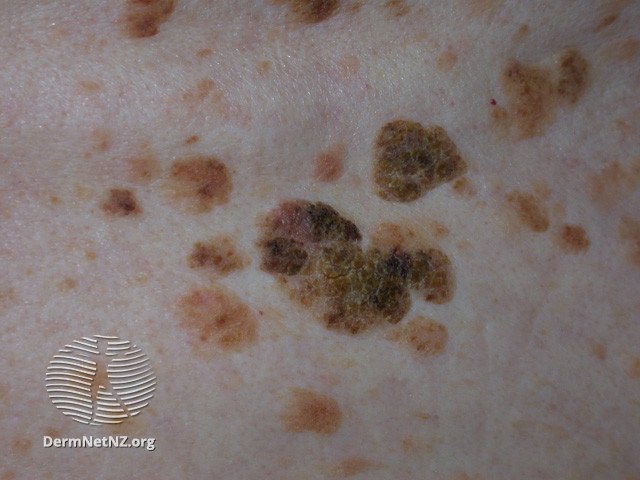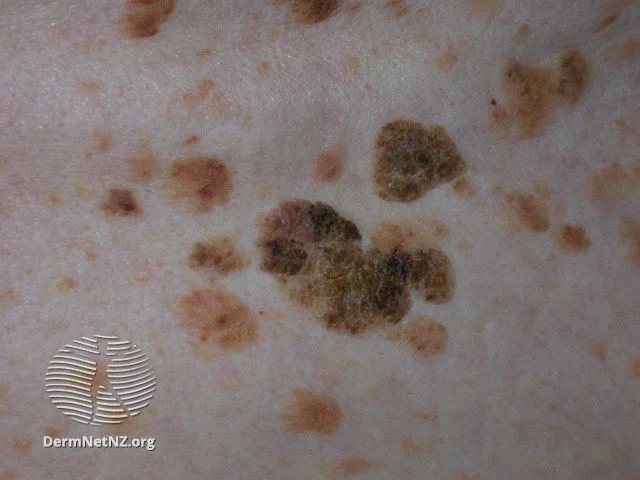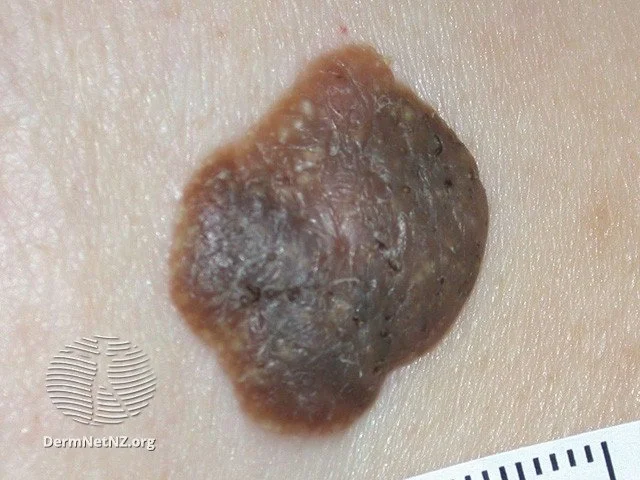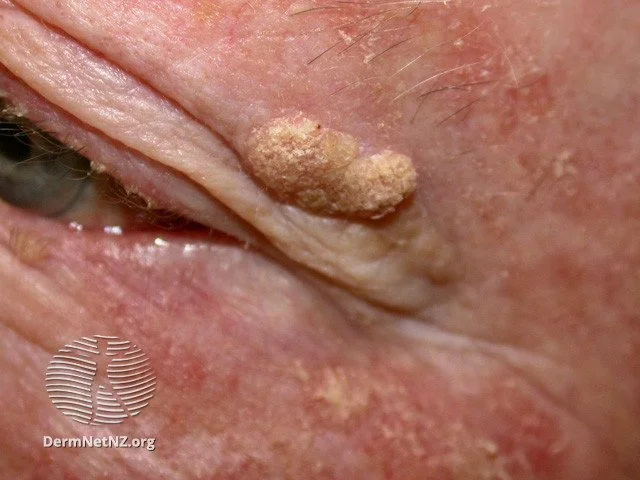
Seborrheic Keratosis
Seborrheic keratosis, which manifests as rough, scaly overgrowths that sit on the surface of the skin.
Credit: DermNet NZ
What is a seborrheic keratosis?
Seborrheic keratosis is a benign and prevalent skin growth often associated with aging. These growths vary in color from light tan to black and have a characteristic shape that can be either flat or slightly raised. They often appear as if they are "stuck on" to the skin.
What causes seborrheic keratosis?
The precise cause of seborrheic keratoses remains unclear. Contrary to what their name suggests, these growths are not connected to oil production or sebaceous glands. They can emerge on various body parts, including those devoid of oil glands. Factors believed to be related to their occurrence include:
Age, as they tend to manifest more with advancing years
Sunburn or other skin inflammations
Prolonged sun exposure leading to cumulative skin damage
Skin friction, especially in body folds
Evolution from existing freckles or similar spots
Some chemotherapy drugs, particularly EGF inhibitors
Prevalence in certain ethnic populations
What are the symptoms of seborrheic keratosis?
Seborrheic keratoses have a diverse appearance, but they typically do not develop on palms or soles. Their features can include:
Being either flat or raised
Exhibiting a smooth or waxy texture
Having a "stuck on" appearance, as if they could be easily scraped off
Varying in size from 1 mm to several centimeters
Displaying a range of colors: skin-toned, yellow, grey, brown, black, or a mix
Appearing individually or in clusters
How do I treat seborrheic keratosis?
While treatment of seborrheic keratoses isn't strictly necessary, some might opt for removal due to cosmetic concerns. Additionally, if skin cancer develops within a seborrheic keratosis, diagnosis can be more challenging. They may also become irritable, itch, or snag on clothing. Common removal methods include:
Curettage or electrosurgery (scraping or burning off)
Focal chemical peels, specifically with trichloracetic acid
Seborrheic keratosis can sometimes resemble melanoma due to its color and rapid growth.
Credit: DermNet NZ
Keratoses can also look very warty and crusty in nature. They have variable apparances.
Credit: DermNet NZ



